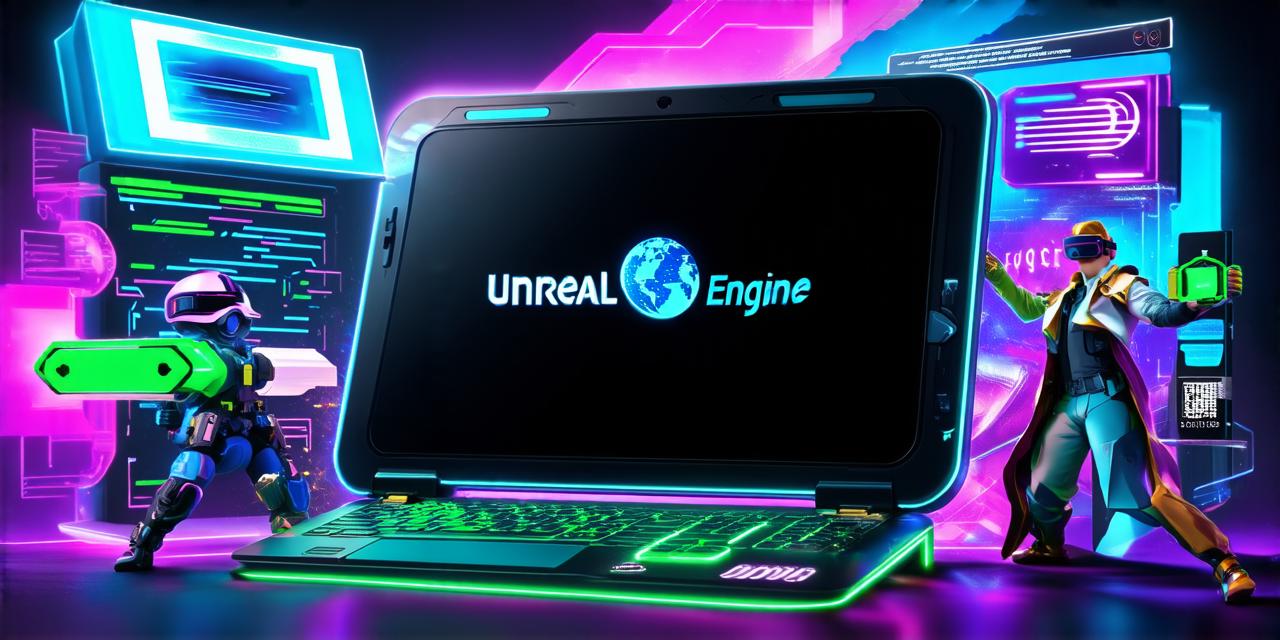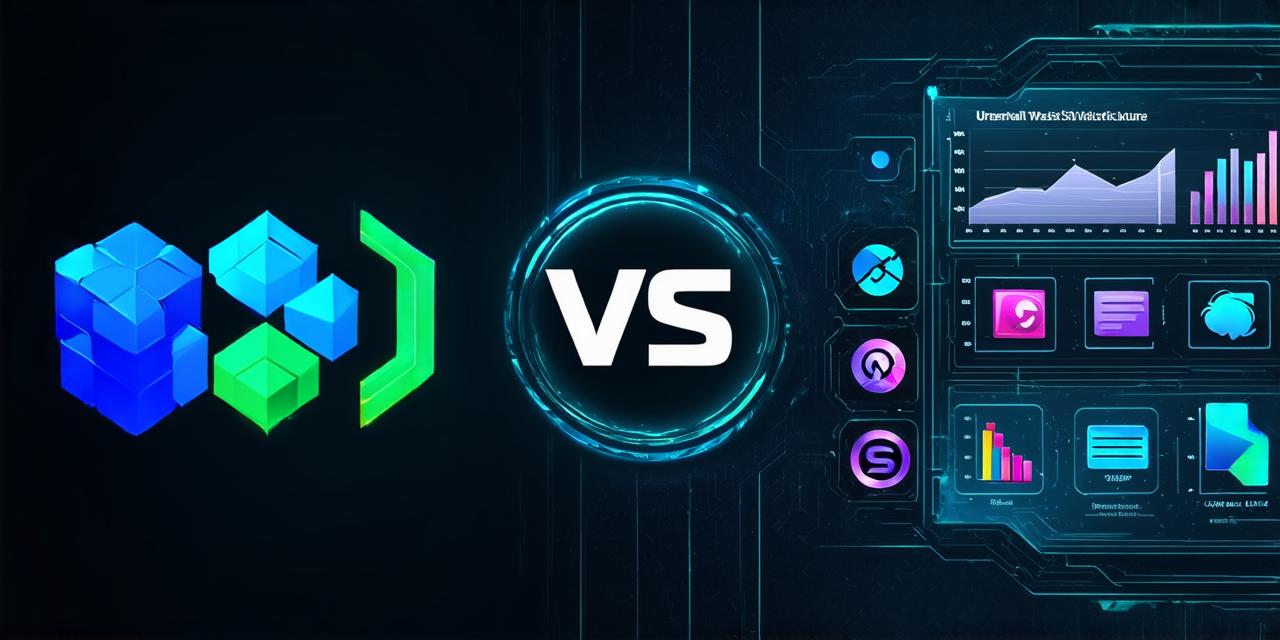Computer-generated imagery (CGI) has come a long way since its inception, and two powerful engines stand out as leaders in the industry: Unreal Engine and
Blender
. Both engines have their own unique strengths and weaknesses, making them suitable for different projects and use cases. In this article, we will compare these two engines and help you determine which one is better suited to your needs.
Unreal Engine 5
Unreal Engine 5
is the latest iteration of Epic Games’ popular game engine. It was designed specifically for real-time rendering and simulation, making it an ideal choice for creating interactive experiences such as video games, virtual reality (VR), and augmented reality (AR). Some of the key features of
Unreal Engine 5
include:
- High-performance graphics rendering:
Unreal Engine 5
uses a cutting-edge rendering pipeline that delivers stunning visuals in real-time. It also supports ray tracing, which allows for more accurate lighting and shadow simulations.
- Dynamic physics simulation:
Unreal Engine 5
includes advanced physics simulation capabilities that allow developers to create realistic interactions between objects in the virtual world. This makes it possible to create complex physics systems such as gravity, collision detection, and rigid body dynamics.
- AI and machine learning support:
Unreal Engine 5
supports AI and machine learning, allowing developers to create intelligent agents that can learn and adapt to their environment. This is particularly useful for creating interactive NPCs in video games.
- Integration with other tools:
Unreal Engine 5
integrates well with other tools such as Photoshop, Maya, and Cinema 4D. This makes it easier for artists and designers to work on assets outside of the engine and then import them into the game world.
Blender
Blender
is an open-source 3D modeling and animation software that is widely used in the entertainment industry. It is a versatile tool that can be used for creating a wide range of projects, including video games, movies, and TV shows. Some of the key features of
Blender
include:
- Advanced 3D modeling capabilities:
Blender
includes a wide range of tools for creating 3D models, including sculpting, modeling, and texturing. It also supports a variety of file formats, making it easy to work with assets from other software packages.
- Animation tools:
Blender
includes powerful animation tools that allow developers to create smooth and realistic animations. It also supports motion capturing, which can be used to capture the movements of real actors and use them in animated characters.
- Scripting support:
Blender
supports a variety of scripting languages, including Python, allowing developers to automate repetitive tasks and create custom tools. This is particularly useful for creating complex rigs and animations.
- Integration with other tools:
Blender
integrates well with other tools such as Unreal Engine and Unity, making it easy to export assets into game engines. It also supports a variety of plugins and add-ons that can extend its functionality.
Which One Excels Where?
Now that we have looked at the features of both engines, let’s compare them and determine which one excels where.
Unreal Engine 5
vs
Blender
for Real-Time Rendering
Both engines are capable of real-time rendering, but Unreal Engine is generally considered to be better suited for this purpose due to its high-performance graphics pipeline and support for ray tracing. This makes it the best choice for creating interactive experiences such as video games or VR/AR applications that require real-time visuals.
Unreal Engine 5
vs
Blender
for Dynamic Physics Simulation
Unreal Engine 5
has advanced physics simulation capabilities that allow developers to create realistic interactions between objects in the virtual world. This makes it an ideal choice for creating complex physics systems such as gravity, collision detection, and rigid body dynamics. However,
Blender
also has some physics simulation capabilities, although they are not as advanced as Unreal Engine’s.
Unreal Engine 5
vs
Blender
for AI and Machine Learning Support
Unreal Engine 5
supports AI and machine learning, allowing developers to create intelligent agents that can learn and adapt to their environment. This makes it particularly useful for creating interactive NPCs in video games. However,
Blender
also has some support for AI and machine learning, although it is not as advanced as Unreal Engine’s capabilities.
Unreal Engine 5
vs
Blender
for 3D Modeling and Animation

Blender
is widely regarded as one of the best tools for creating 3D models and animations. It includes a wide range of modeling and animation tools that make it easy to create complex scenes and characters. However, Unreal Engine also has some modeling and animation capabilities that make it suitable for creating simple scenes and animations.
Summary
In conclusion, both
Unreal Engine 5
and
Blender
have their own unique strengths and weaknesses, making them suitable for different projects and use cases. If you are looking to create a real-time interactive experience, such as a video game or VR/AR application, then Unreal Engine is the best choice due to its high-performance graphics pipeline and support for dynamic physics simulation. If you are looking to create complex 3D models and animations, then
Blender
is the better choice due to its advanced modeling and animation tools.




